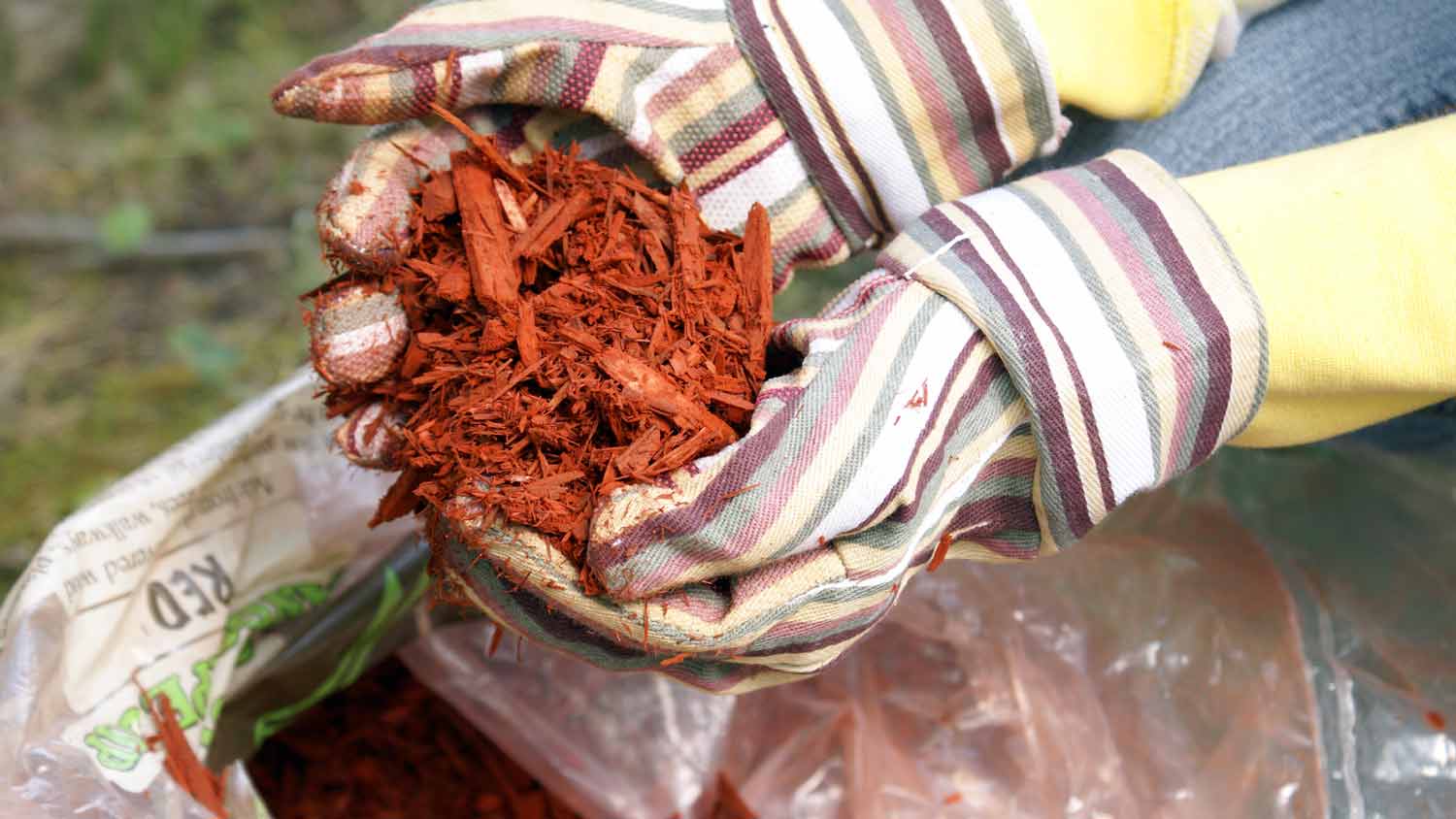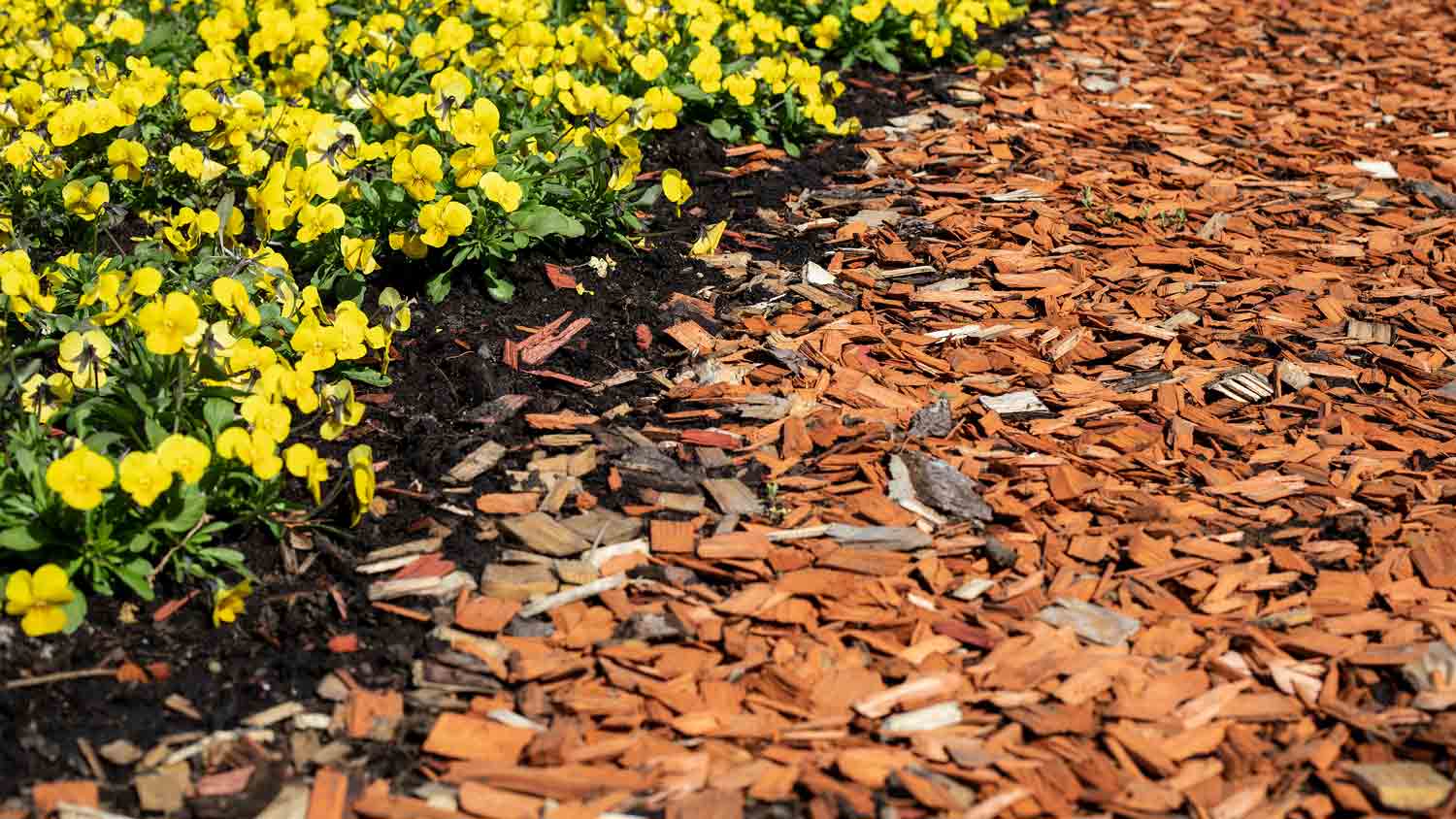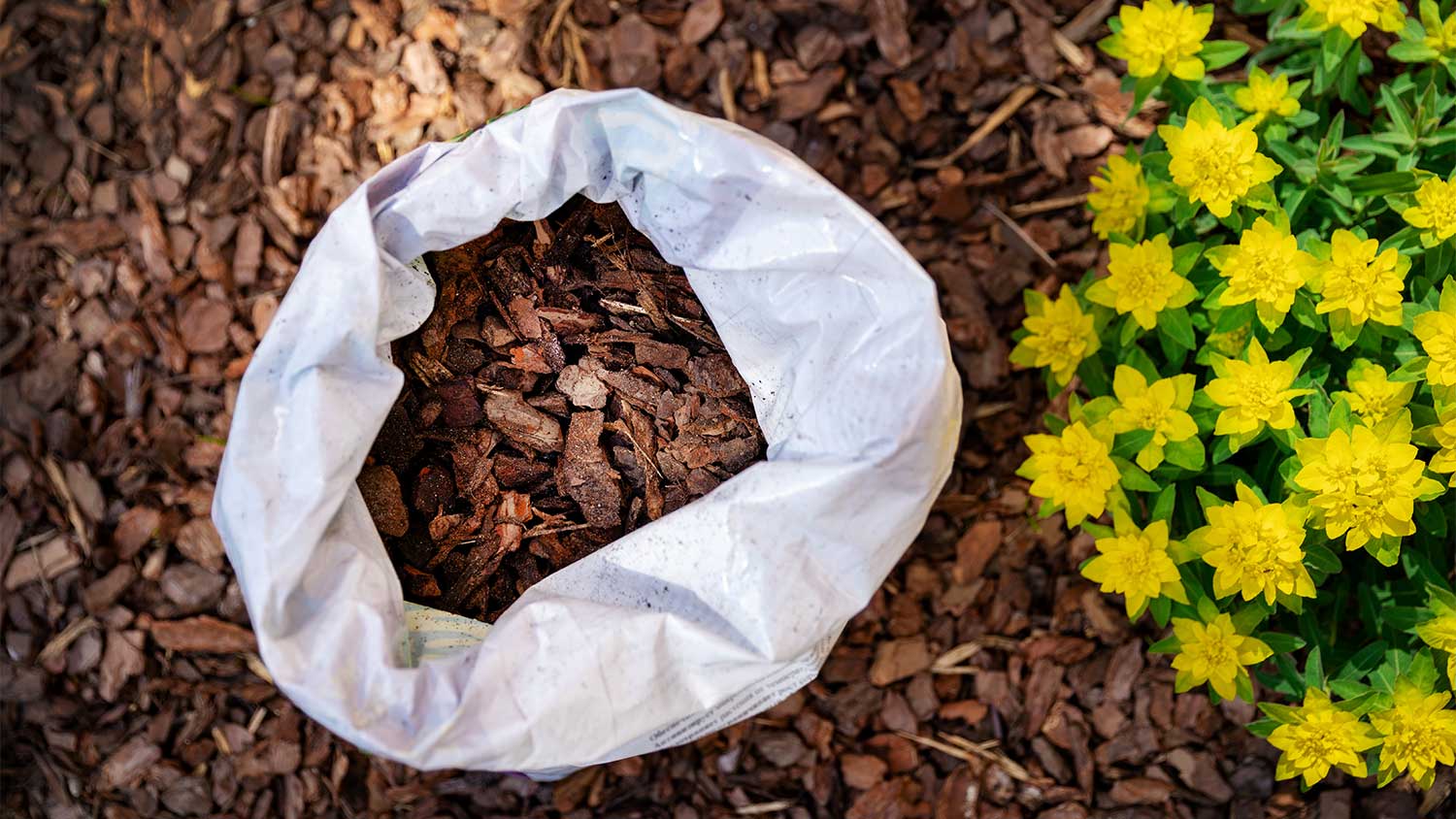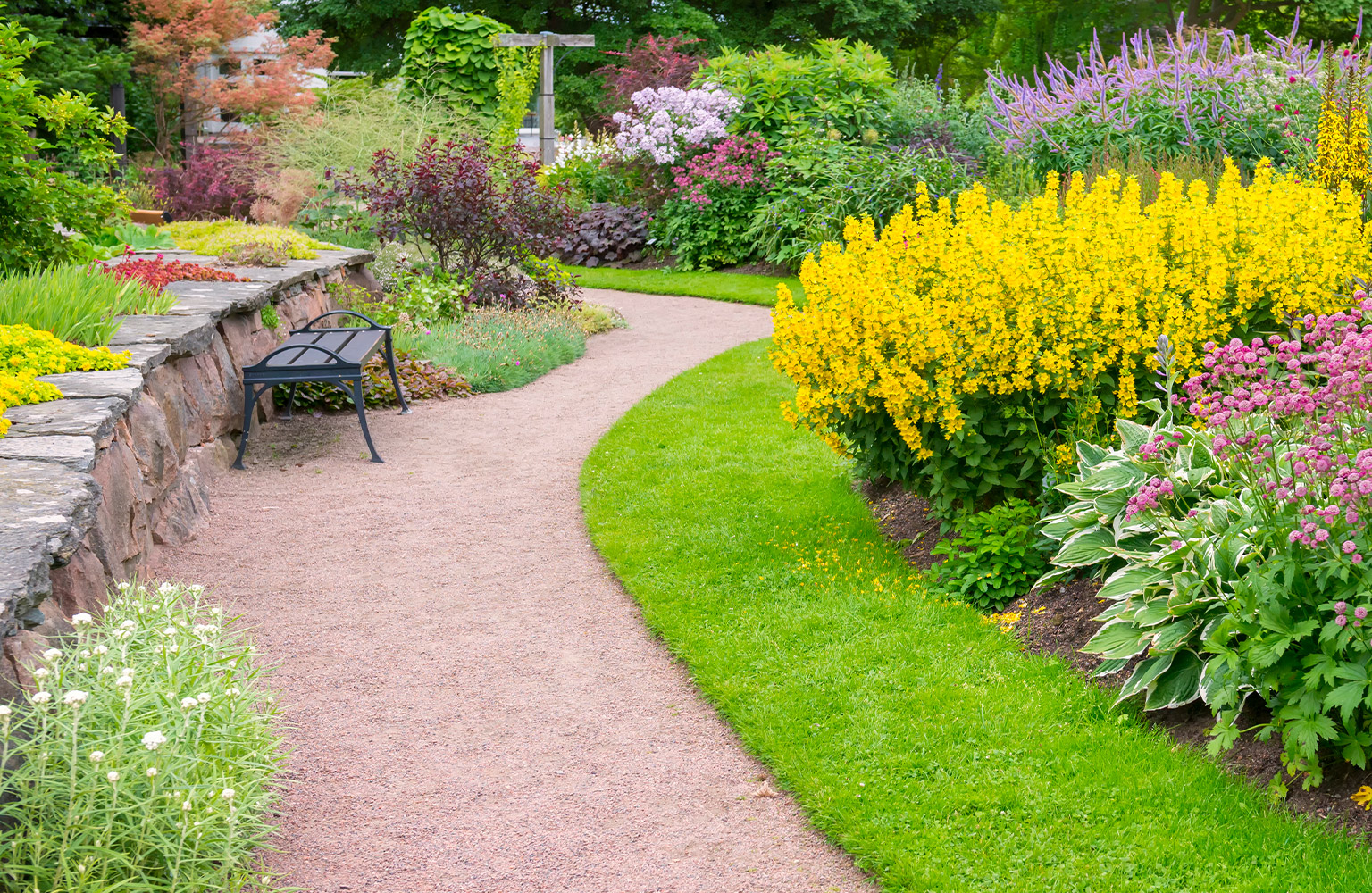
Find out how much a soil test costs and what you get for your money with our expert guide. Know what to budget for different types of soil tests.
There’s lots of ground to cover when it comes to wood chips vs. mulch


Wood chips are more decorative, while mulch is used for soil health.
Wood chips cost about $85 per cubic yard, while mulch costs $30 to $150 per cubic yard.
Wood chips come in larger, uniform pieces, but mulch is more thin and shredded.
Much breaks down faster than wood chips, which is better for long-term lawn coverage.
Planting your garden is only half the battle—you'll need to cover your beds to ensure your tomatoes are top-notch and keep wicked weeds at bay. Using wood chips or mulch in your beds can improve soil quality, save your plants from an early frost, and even improve the look of your beds.
But what’s the difference between wood chips and mulch? This guide lays out the uses of both, comparing wood chips vs. mulch to find the ideal fit for your outdoor oasis.

At first glance, there doesn’t seem to be much difference between wood chips and mulch. You can use both in your yard, and both will help plants grow, but there are differences in composition and purpose. Wood chips are made from chipped branches, bark, and whole pieces of wood, and they come in larger, more uniform pieces. They are mainly used for paths, playgrounds, and decorative landscaping. Wood chips offer durable coverage and break down slowly. They retain some moisture and suppress some weeds, but they are more beneficial for long-term coverage than soil enrichment.
Mulch is more thin and shredded. It can be made from wood chips or other organic materials like shredded bark, leaves, straw, and inorganic materials like rubber or gravel. It is mostly used in garden beds and around plants for moisture, suppressing weeds, regulating soil temperature, and improving soil health as it decomposes. Organic mulch breaks down faster than wood chips, enriching the soil with nutrients. Since it supports plant growth, mulch is preferred for gardening and landscaping where soil quality is a priority.
When taking on this project, expect questions only a pro can answer. With our network of local pros, you'll get the job done and your questions answered—without the hassle and stress of doing it yourself.

Wood chips are small, shredded pieces of wood made from the interior of trees. Landscapers use wood chips as ground cover to retain some moisture and prevent weed growth. Wood chips can come in their natural color, but there are also some dyed varieties to complement landscapes.
| Pros | Cons |
|---|---|
| Coverage | Variety |
| Long-lasting | Cost |
| Erosion protection | Can harm seedlings |
| Temperature regulation | Lower water retention |
Best for:
Landscapers: Wood mulch is great for use around shrubs, trees, or perennials.
Playspace: Wood chips are larger and softer to land on in outside spaces where children play.
Uniform: Wood chips are ground up to be the same size and texture, meaning more even coverage across a garden bed. Laying down wood chips in a garden bed can make a yard look tidier.
Long-lasting: Once installed, wood chips last up to five years. Plus, when the wood chips start breaking down, they’ll just feed more nutrients to your soil.
Erosion protection: Wood chips are highly absorbent and can help prevent erosion in climates with high rainfall.
Maintaining temperature: Wood chips are great at retaining temperature. They keep vegetation cooler in the summer and warmer in the winter. While this temperature regulation won’t keep your plants from frosting in some climates, it helps prevent drought in the summer and stave off late frosts in the spring.
Variety: Since wood chips are all made the same way with the same materials, you won’t find them in different colors, styles, or sizes.
Cost: Options for wood chips are limited and typically cost around $85 per cubic yard.
Can harm early-growth plants: Sometimes, wood chips are almost too good at keeping small seedlings, like weeds, from growing. If your bed has seeds or seedlings in it, wood chips could prevent them from growing. Similarly, using too many wood chips around a tree can lead to too much moisture, causing wood rot.
Lower water retention: Wood chips can be a great fit for wetter climates because of their absorbency level. But, for gardeners in a drier climate, wood chips might not retain enough moisture to keep your plants cooled and watered.

Mulch is organic, or inorganic, matter used to cover over soil. Its main purposes include retaining water, reducing weed growth, keeping plants cool, and improving the appearance of a garden bed. Consult a local mulch delivery service to determine the right type and amount of mulch to add to your garden.
| Pros | Cons |
|---|---|
| Made with different materials | Frequency |
| DIY-able | Aesthetic appeal |
| Stronger growth | Rough feel |
Best for:
Gardeners: The nutrient-rich nature of mulch makes it ideal for spreading across vegetable and flower beds.
Drier climates: Mulch can retain lots of moisture, helping plants receive nutrients, even when it hasn’t rained. But using lots of mulch in a climate with tons of rain can waterlog your plants.
Types of mulch: Mulch can be made from organic and inorganic materials, including everything from shredded leaves to rubber, which means you have a wide variety of colors and sizes to choose from. Mulch costs anywhere from $30 to $150 per cubic yard. The variety of choices means you can find the right mulch to fit your budget. There are plenty of mulch alternatives to consider as well.
DIY-friendly: If you have the time and patience, a mulch job can be very affordable. You can make your own mulch and spread it yourself, saving on the materials and installation. If not, hire a local mulch delivery service.
More growth: Covering your garden beds with mulch keeps them moist longer, prevents weeds from creeping in, and provides your plants with important nutrients. Laying down mulch in your beds will likely lead to better plant growth and fewer weeds.
Frequency: Ideally, gardeners should aim to mulch their beds twice a year, once at the least. Mulch breaks down quickly, so it requires some upkeep to see the benefits. This could make the process pricey or time-consuming for some.
Curb appeal: Because mulch pieces are smaller and less uniform, they may not be as aesthetically appealing as a wood chip, which is more uniform in shape.
Tough texture: Due to their irregular shape and material, mulch might feel tougher under foot or on a gardener’s hands.
Too much mulch can hinder plant growth as it blocks the nutrients, sunlight, and water it needs to grow. One to four inches of mulch is your average mulch depth for most plants.

Now that you have a basic understanding of wood chips and mulch let’s lay out the differences between the two.
Due to their uniform size and shape, wood chips generally make beds look tidier than mulch. While everyone has their own taste, wood chips are better at defining garden beds, making them look crisp and tidy.
Mulch will also create dimension in a yard, but it might not look as tidy as wood chips without much upkeep.
Wood chips are simply pieces of shredded wood, whereas mulch has seemingly endless options to choose from. You can choose from organic mulch, like shredded bark or pine straw, or inorganic, like rubber mulch. Mulch comes in many different sizes and finishes, giving homeowners more variety.
If you choose the mulch route, you could be spreading it in the yard twice a year, at the most. On the other hand, wood chips can last in a yard for up to five years.
Both mulch and wood chips will keep garden beds cool and moist and prevent weed growth. But, when you put the two head to head, mulch will help a garden grow more. The general rule of thumb when it comes to wood chips vs. mulch? Use wood chips around shrubs, trees, or landscaping. Opt for mulch in garden beds or vegetable gardens.
Wood chips provide a softer fall during outdoor play, making it ideal to install under swing sets and home playgrounds.
Generally, most mulches are cheaper per cubic yard than wood chips. Plus, mulch can be made at home for close to nothing.
However, mulch can be laid up to twice a year, while most opt to install wood chips every few years. Frequency could have an impact on your bottom line.
It could mean a long day in the yard, but installing mulch or wood chips is simple. However, DIY-ing wood chips would take some industrial machinery and an entire tree.
You can make mulch from organic matter in your own backyard. You can DIY mulch using compost, shredded newspaper, lawn clippings, and even dried leaves.
From average costs to expert advice, get all the answers you need to get your job done.

Find out how much a soil test costs and what you get for your money with our expert guide. Know what to budget for different types of soil tests.

Find out the average mulch delivery and installation cost, plus key factors that impact your price. Learn how to budget, compare options, and save on your landscaping project.

Discover the average sand delivery cost, key price factors, and tips to save on your next project. Get transparent, up-to-date estimates for sand delivery.

Wondering if you should mulch in the fall to protect your plants from the colder weather? Chances are, you probably should. Here’s why.

Organic mulch improves soil quality, holds in moisture, and helps plants thrive, but how does it work? Learn how mulch can improve your yard.

This calculator helps you estimate how much topsoil you need, so you can purchase materials and budget for your project, whether it’s for your lawn or garden.